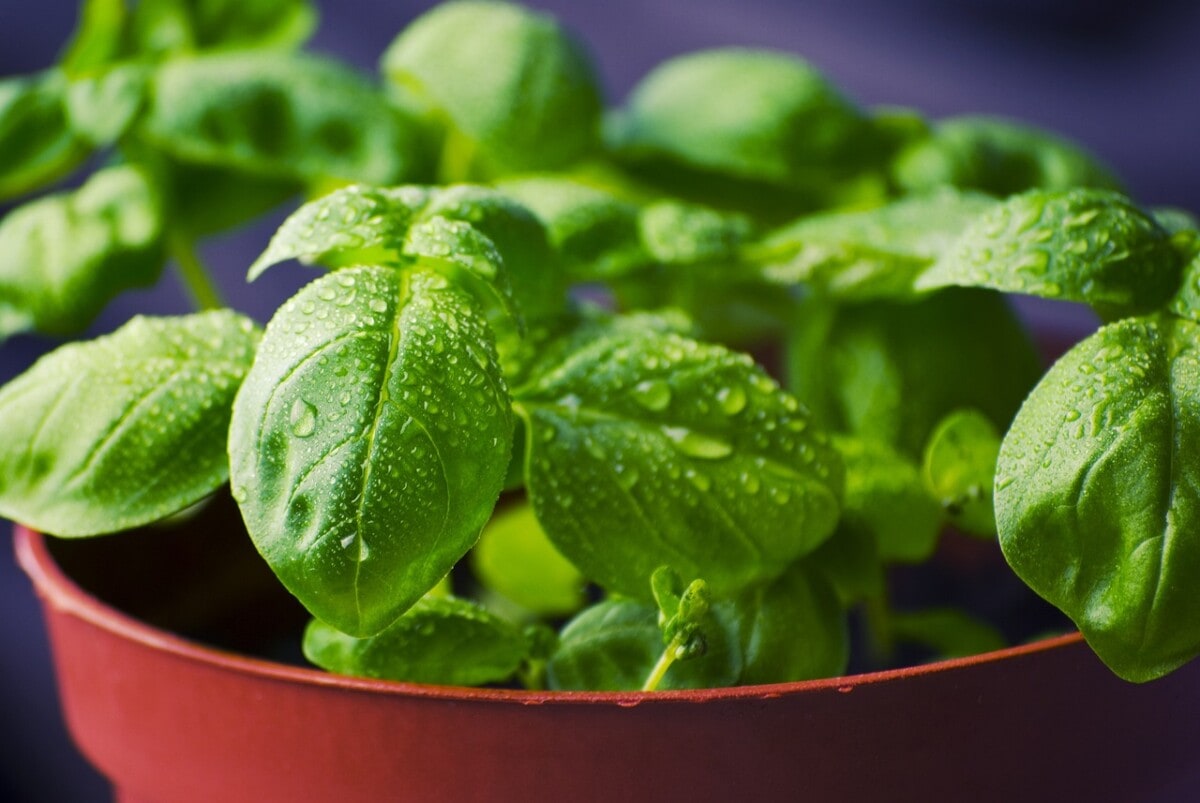Fresh herbs and vegetables infuse vibrant flavors and essential nutrients into our meals. However, improper storage can lead to premature wilting, loss of flavor, and even spoilage. To make the most of your garden harvest or farmers’ market finds, it’s crucial to know the right techniques for preservation. In this Redfin article, we’ve compiled nine expert tips to help you effectively store fresh herbs and vegetables in your kitchen. From simple tricks to innovative methods, these practices will not only extend the lifespan of your greens but also elevate the taste of your dishes. So whether you live in an apartment in Tyler, TX, or a house in Anchorage, AK, let’s dive in and discover how you can keep your kitchen stocked with flavorful ingredients.

Tips for storing herbs
1. Store basil in a jar of water
Storing basil in a jar of water is crucial for preserving its freshness and flavor. This method keeps the herb hydrated, preventing wilting and ensuring that it retains its aromatic oils.
“It’s easy to store fresh basil, specifically the stems and leaves, in a jar of water on the kitchen counter,” says horticulturist Nina Koziol of Beauty and the Feast. “Fill the jar with an inch of water and remove any leaves that are under the surface. If I don’t use the basil immediately, the stems will grow roots, and I’ll have new plants to grow indoors.”
2. Wrap your herbs in a damp paper towel and seal in a snack bag
Wrapping herbs in a damp paper towel and sealing them in a snack bag helps maintain optimal moisture levels, preventing wilting and decay. This method creates a controlled environment that extends the herbs’ shelf life.
“To store fresh herbs in the fridge, the herbs should first be cleaned and remove any brown, wilted, or dry parts,” notes Zhi Herbals. “For optimum freshness and longevity, you’ll want to wrap them in a damp paper towel, then place the herbs and paper towel inside a sealed snack bag. Investing in silicone or beeswax plastic bag alternatives is worthwhile to help keep your fridge eco-friendly.”
3. Use a silicon bag
Using a silicone bag for herb preservation is great due to its airtight seal, which effectively locks in moisture and prevents exposure to air.
“The best way to store fresh herbs like basil, oregano, or parsley is to wash thoroughly and then place in a reusable silicone zip food storage bag with a small amount of water on your fridge door. The humidity inside the bag will keep your herbs hydrated, and the door of your fridge is the warmest part so that the cold won’t damage your herbs,” recommends The Cottage Peach.

4. Freeze your herbs
Freezing herbs is a crucial preservation method as it lets you capture their peak freshness, locking in flavor and nutrients.
Fresh Eggs Daily® with Lisa remarks, “Instead of drying herbs to use through the winter, you can freeze them. You can use a plastic baggie, but I save plastic berry boxes. Divide the fresh snipped leaves from basil, rosemary, thyme, mint, sage, oregano, etc. into separate berry boxes. Then, stack the berry boxes in the freezer. This way, the herbs retain their vibrant colors and shape. Defrost as needed to use in cooking.”
Tips for storing vegetables
5. Ferment your veggies
Fermenting vegetables is a natural preservation method that extends their shelf life and enhances their flavor profile and nutritional value.
Sabrina Huizar of Positively Probiotic states, “I feel the best way to store herbs and veggies is to ferment them. They will last much longer and are probiotic.”
Through the process of lacto-fermentation, beneficial bacteria thrive, creating a tangy, probiotic-rich product while inhibiting harmful pathogens, resulting in a delicious and healthful addition to your food.
6. Store vegetables at a certain temperature
“Squash, potatoes, onions, and garlic should all be stored between 50 and 60 degrees Fahrenheit in a cool, dark, dry cupboard. If you don’t have a root cellar, choose a cupboard space far from your oven or any other heat-producing appliance,” shares Zhi Herbals.

7. Use mason jars
Storing vegetables in mason jars keeps them crunchier and longer and turns your fridge into a colorful feast for the eyes. Just remember to wash and dry your veggies thoroughly before packing them in, and for an extra freshness kick, pop a damp paper towel on top before sealing,” recommends Stocking My Pantry.
8. Don’t wash your leafy greens until ready for use
Washing your leafy greens can create moisture, leading to a shorter shelf life and potential bacterial growth, compromising the quality and freshness of the greens.
“Leafy greens like lettuce and spinach will last longer if you don’t wash them until ready to use,” states Herb Garden. “Wrap unwashed greens in paper towels and store them in resealable plastic bags in the refrigerator crisper drawer.”
9. Remove the tops of hardy vegetables, wash and dry
The tops, such as carrot greens or beet greens, draw moisture and nutrients away from the main vegetable, causing it to lose its crispness and vitality over time.
“Hardy vegetables like carrots, celery, and radishes can be prepared for storage by removing any tops, washing, and drying completely. Place in resealable plastic bags or containers and store in the refrigerator,” adds Herb Garden.
- SEO Powered Content & PR Distribution. Get Amplified Today.
- PlatoData.Network Vertical Generative Ai. Empower Yourself. Access Here.
- PlatoAiStream. Web3 Intelligence. Knowledge Amplified. Access Here.
- PlatoESG. Carbon, CleanTech, Energy, Environment, Solar, Waste Management. Access Here.
- PlatoHealth. Biotech and Clinical Trials Intelligence. Access Here.
- Source: https://www.redfin.com/blog/how-to-store-herbs-and-vegetables/



